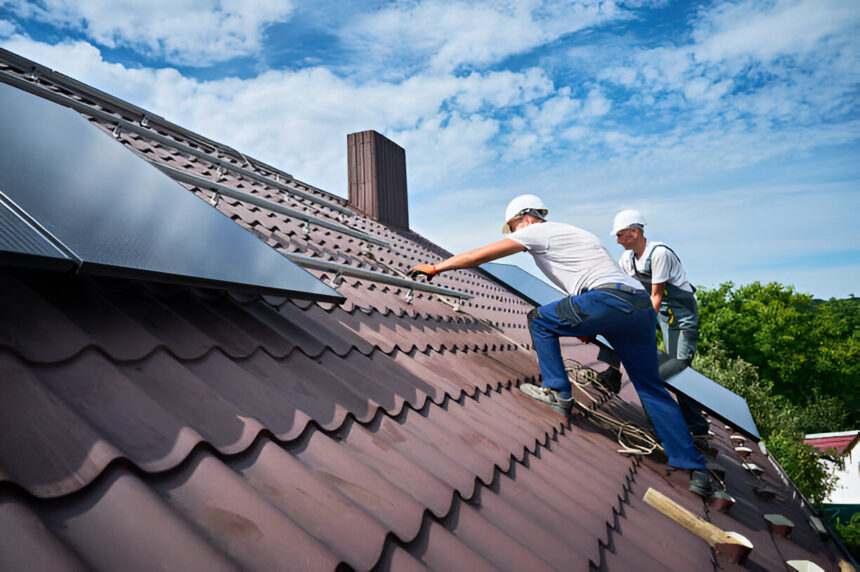Introduction
Your roof is arguably one of the most essential elements of your property. It shelters you from the elements, insulates your home, and enhances curb appeal. But like any part of your property, your roof requires regular care to remain in top condition. This is where Fladderak Roof Management comes in. Proper techniques and a proactive approach can extend your roof’s lifespan and save you from costly repairs.
Whether you’re a homeowner, property manager, or real estate investor, this guide offers practical tips on inspection, cleaning, repairs, and seasonal maintenance to help ensure your roof stands the test of time.
Inspection Guidelines for Fladderak Roof Management
One of the cornerstones of Fladderak Roof Management is regular inspections. A scheduled inspection helps you spot potential problems before they escalate into costly damage.
How Often Should You Inspect?
- Twice a year: Conduct inspections during spring and fall to prepare for extreme weather.
- After extreme weather: Always check for damage after storms, hail, or heavy snowfall.
- When buying a property: If you’re investing in real estate, ensure your roof inspector checks for wear and hidden issues.
What Should You Look For?
- Exterior inspection: Look for loose, cracked, or missing shingles. Check for sagging or pooling water on flat roofs.
- Interior inspection: Inspect your attic for water stains, mold, or sagging ceilings. These could indicate leaks.
- Drainage system: To avoid water buildup, make sure gutters and downspouts are unclogged and directed away from the foundation.
Following these simple inspection guidelines can prevent many roofing problems before they start.
Cleaning Methods for Different Roof Types
Cleaning your roof is an essential step in Fladderak Roof Management that ensures your roof remains free of debris, mold, and algae buildup. However, different roofing materials require different cleaning methods.
Asphalt Shingles
Use a soft-bristle brush and a cleaning solution designed for removing algae or stains. Avoid pressure washing, as it can loosen shingles.
Metal Roofs
Use a low-pressure washer with mild soap and water to clean dirt or stains. Check for rust spots, and apply roof-safe rust inhibitors if needed.
Wooden Shingles
Gently remove debris and moss with a soft brush. Apply a wood-friendly cleaning solution and rinse with low-pressure water. Avoid harsh chemicals as they may damage the wood.
Clay or Tile Roofs
Delicately remove debris using a soft broom or brush. Rinse with water, avoiding high-pressure tools that can crack tiles.
A clean roof looks good and lasts longer, as it prevents unwanted buildup that can damage materials over time.
You May Also Like to Read: Transform Your Home with These 10 Fresh Decor Ideas
Addressing Minor Repairs Promptly
Even with regular care, minor issues can arise. Waiting to address them can lead to larger, more expensive problems. Timely action is a key principle of Fladderak Roof Management.
Common Minor Repairs
- Loose or missing shingles: Replace them quickly to prevent leaks or further damage.
- Cracked flashing: Repair cracked or rusted flashing around chimneys and vents to keep water out.
- Small leaks: Use roof sealant to patch small leaks before they worsen.
DIY Vs. Professional Help
While some minor repairs can be handled independently, more significant issues or steep roofs require attention from a licensed roofing professional. Prioritize safety above all else.
Promptly addressing repairs protects your roof and the interior structure of your home or property.
Seasonal Maintenance Tips for Fladderak Roof Management
Seasonal changes bring challenges that can impact your roof. Preparing for these changes through regular upkeep is a core part of Fladderak Roof Management.
Spring and Summer
Remove debris left by winter storms, such as branches or leaves. Inspect seals and shingles that may have cracked due to cold weather. Ensure gutters are straightforward enough to handle spring rains effectively.
Fall and Winter
Trim overhanging branches to prevent them from dropping onto the roof during heavy winds or snow. Check the roof’s structural integrity to prepare for added snow weight in winter. Install gutter guards to prevent fallen leaves from clogging your drainage system.
By tailoring roof maintenance to each season, you can minimize weather-related damage and keep your roof in peak condition year-round.
Safeguard Your Roof with Fladderak Roof Management
Your roof is a significant investment, and protecting it is crucial for the safety and value of your property. By following these essential tips for Fladderak Roof Management, you can keep your roof in top shape, avoid unexpected repairs, and enjoy peace of mind for years to come.
Start with regular inspections, adapt your cleaning methods based on your roof type, address minor repairs quickly, and perform seasonal maintenance. With these simple yet effective steps, you’ll be well on your way to ensuring the longevity of your roof.
Are you ready to take control of your roof’s health? Start implementing these practical tips today and enjoy the benefits of a long-lasting, well-maintained roof.
Frequently Asked Questions (FAQs)
1. How often should I inspect my roof?
It’s recommended to inspect your roof at least twice a year, ideally in the spring and fall.
2. What is the best way to clean a roof?
Use cleaning methods suitable for your roof type, such as soft washing for shingles or pressure washing for metal.
3. Why is seasonal maintenance important?
Seasonal maintenance helps address weather-related wear and tear, preventing small issues from becoming costly repairs.
4. Should I fix minor roof damages myself?
While minor repairs can sometimes be DIY, it’s safer to consult a professional to avoid causing further damage.
5. How can I ensure my roof lasts longer?
Regular inspections, timely repairs, proper cleaning, and seasonal maintenance are key to extending your roof’s lifespan.






